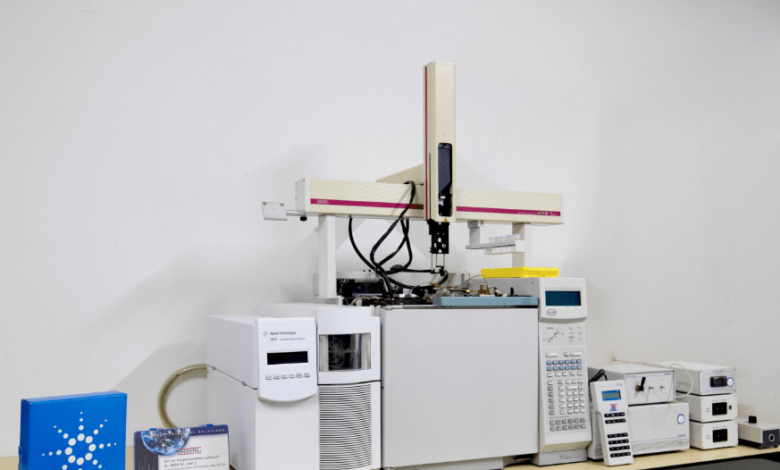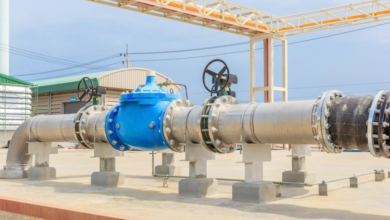The GC Machine: A Crucial Tool for Modern Analytical Chemistry

In today’s fast-paced world of scientific discovery and industrial innovation, the need for precise chemical analysis has never been greater. One of the most trusted technologies in this space is the gc machine, a powerful tool used for separating and identifying volatile and semi-volatile compounds in complex mixtures. Whether you’re analyzing pharmaceuticals, detecting environmental contaminants, or testing the purity of food products, the gc machine is at the heart of these essential processes.
This article provides a comprehensive understanding of the gc machine, its components, functionality, applications, and how it continues to empower professionals across industries.
What is a GC Machine?
A GC machine short for gas chromatograph, is an analytical instrument used to separate the components of a chemical mixture based on their volatility and interaction with a stationary phase inside a chromatographic column. It works by injecting a sample into a carrier gas stream that flows through the column. As the mixture travels through, the individual components are separated due to differences in their affinity to the column material and then detected as they exit.
This separation technique is incredibly precise and allows for both qualitative and quantitative analysis of substances—even in trace amounts.
See also: IT Support Services to Keep Your Technology Running Smoothly
Core Components of a GC Machine
Understanding the anatomy of a gc machine helps users operate it efficiently and interpret results accurately. Let’s break down the essential parts:
1. Carrier Gas System
The carrier gas (usually helium, hydrogen, or nitrogen) transports the sample through the column. It must be inert and highly pure to avoid interfering with the analysis.
2. Injector
The sample enters the gc machine through the injector port. The injector is heated to vaporize the sample instantly, ensuring it mixes uniformly with the carrier gas.
3. Chromatographic Column
Housed within a temperature-controlled oven, the column contains the stationary phase that interacts differently with each component of the sample, enabling separation. Columns can be packed or capillary, depending on the type of analysis required.
4. Oven
The oven maintains precise temperatures, allowing the separation process to proceed efficiently. Temperature programming (gradual heating) helps improve separation of components with varying volatilities.
5. Detector
Once separated, the compounds are identified and quantified by a detector. Common detectors include:
- Flame Ionization Detector (FID)
- Thermal Conductivity Detector (TCD)
- Electron Capture Detector (ECD)
- Mass Spectrometry Detector (when used in GC-MS systems)
6. Data System
The output is processed by sophisticated software, transforming the signal from the detector into a chromatogram. This visual representation shows the concentration of each component over time.
Common Applications of a GC Machine
The versatility of the gc machine makes it a standard piece of equipment in various fields. Below are some of its most common applications:
🔬 Pharmaceutical Industry
- Quality control of active pharmaceutical ingredients (APIs)
- Determination of residual solvents
- Stability testing of drugs
🌱 Environmental Testing
- Detection of pollutants in air, water, and soil
- Monitoring of greenhouse gases and volatile organic compounds (VOCs)
🧪 Chemical and Petrochemical Industry
- Analysis of hydrocarbon mixtures
- Monitoring chemical production processes
🍔 Food and Beverage Sector
- Identification of flavor compounds
- Detection of pesticides and contaminants
- Quality assurance and regulatory compliance
🕵️ Forensic Science
- Identification of drugs and poisons
- Blood alcohol analysis
- Arson investigations
Advantages of the GC Machine
The gc machine is known for its unique advantages over other analytical instruments:
- High Sensitivity: Capable of detecting substances at extremely low concentrations (parts per billion or trillion).
- Quick Analysis: Runs are often completed in a matter of minutes, improving lab productivity.
- Wide Applicability: Suitable for organic compounds, semi-volatiles, and gases.
- Robust and Reproducible: Delivers consistent, reliable results with minimal variation.
- Ease of Automation: Compatible with autosamplers and robotics for high-throughput labs.
Types of GC Machines
The type of gc machine chosen depends on the complexity of the analysis and the lab’s requirements:
1. Basic GC Systems
Standard configurations ideal for educational and routine analysis tasks.
2. GC-MS Systems
These systems combine gas chromatography with mass spectrometry, offering unmatched accuracy and compound identification capabilities.
3. Portable GC Units
Lightweight and mobile, these are perfect for on-site testing, especially in environmental and forensic investigations.
4. Multidimensional GC (GC×GC)
Used for separating extremely complex mixtures by using two different columns with varying stationary phases.
Choosing the Right GC Machine
When selecting a gc machine for your lab or industry, several factors must be considered:
- Nature of Samples: Choose a detector and column suitable for the chemical characteristics of your samples.
- Throughput Needs: High-volume labs should consider autosamplers and faster run-time capabilities.
- Budget: Costs vary from basic systems to advanced GC-MS configurations.
- Software Usability: User-friendly interfaces and automation features reduce operator error and training time.
- After-Sales Support: Consider vendors offering technical assistance, warranty, and training.
Best Practices for GC Machine Maintenance
Routine care is essential to keep your gc machine functioning accurately and efficiently:
- Leak Testing: Regularly check for gas leaks to avoid analytical inconsistencies.
- Column Care: Avoid contamination by using guard columns and replacing them as needed.
- Injector Maintenance: Clean or replace septa, liners, and syringes regularly.
- Calibration: Use certified reference standards to calibrate the system.
- Software Updates: Keep software up to date for optimal data acquisition and security.
Innovations and Future Trends in GC Machines
As science progresses, the gc machine continues to evolve. Some emerging trends include:
🧠 AI-Powered Chromatography
Artificial intelligence is now being integrated for automatic peak detection, retention time prediction, and fault diagnosis.
🌱 Green GC
Eco-friendly instruments are being designed with energy efficiency, hydrogen generators, and reduced solvent use.
🌐 Remote Monitoring
Cloud-based data systems allow scientists to monitor and control their gc machine remotely.
🧬 Micro-GC Technology
Miniaturized systems for field applications are gaining traction in mobile labs and emergency response scenarios.
Top Manufacturers of GC Machines
Some of the most recognized names in the global gc machine market include:
- Agilent Technologies
- Shimadzu Corporation
- Thermo Fisher Scientific
- PerkinElmer
- Scion Instruments
These manufacturers offer systems tailored to specific applications and budgets, making advanced chromatography accessible to labs of all sizes.
Conclusion
The gc machine stands as a symbol of accuracy, innovation, and reliability in the realm of analytical science. Whether you’re safeguarding public health, ensuring product safety, or unraveling a forensic mystery, this instrument is indispensable.
As technology continues to refine and expand its capabilities, the gc machine remains an enduring asset, enabling scientists to dig deeper into the molecular world with speed, precision, and confidence. Investing in the right system—and using it wisely—can redefine the analytical potential of any laboratory or research facility.





